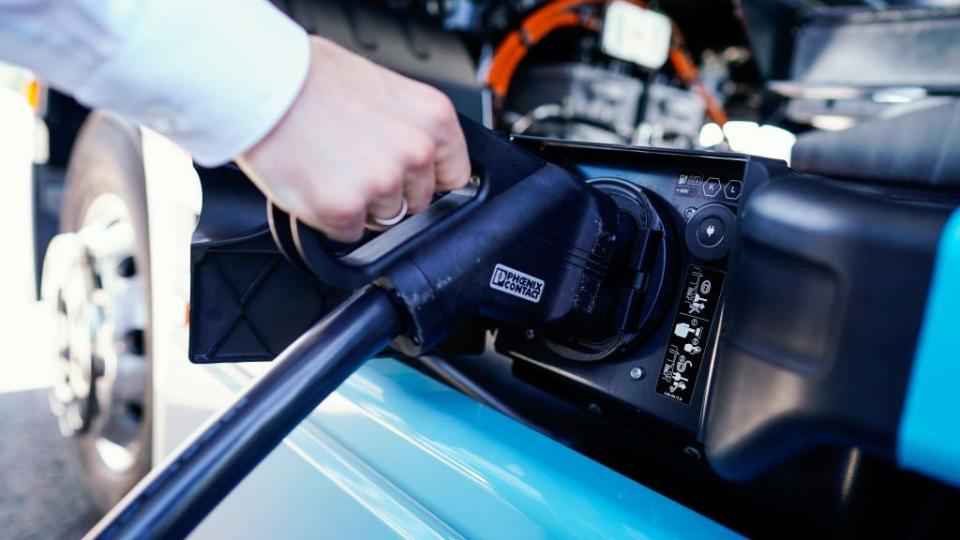This Segment of EV Charging Finally Sees Growth toward Zero Emissions

Eight sites in the LA area will receive up to 207 chargers for electric trucks as part of a $135 million project backed by the ports of Long Beach and Los Angeles.
The two ports have hosted some of the earliest efforts for EV charging for drayage trucks in the US, as the state seeks to reduce emissions in major industrial zones close to urban areas.
Electric semis for drayage operations are seen as one of the most promising truck categories for electrification, alongside smaller last-mile delivery trucks.
EV charging tailored to be accessible to all trucks is not easy to find in the US, with almost all electric truck fleets relying on their own charging infrastructure at their home bases.
While this trend is largely seen as part and parcel of current EV truck fleets, with most engaged in last- or middle-mile deliveries, it doesn't exactly encourage smaller businesses with no chargers of their own to make the leap to electric.
But there are a handful of exceptions to the EV truck charging desert, and the ports of Los Angeles and Long Beach are two of them. And they're about to grow in a big way.
The two ports have recently announced plans to provide a collective $25 million for charging infrastructure meant for heavy-duty, electric drayage trucks as part of a wider $135 million effort led by the Mobile Source Air Pollution Reduction Review Committee to build out California's network of stations for commercial EVs, including buses. Each port will contribute $12.5 million toward the project.
In all, the plans include up to 207 charging stalls at eight sites in the LA area, including locations at the Port of Long Beach, as well as nearby Wilmington, Rancho Dominguez, Rialto, Fontana, and Commerce.
"We're investing with our Clean Truck Fund to get both zero-emission (ZE) trucks and infrastructure on the street as quickly as possible,” said Port of Los Angeles Executive Director Gene Seroka.
The South Coast Air Quality Management District will administer the contracting for the project, which should allow electric trucks more freedom of movement in the greater LA area. Fontana and Rialto are about two hours away from the Port of Long Beach, so trucks will be able to reach warehouses well east of the coast.
The Port of Long Beach has been one of the major adopters of truck charging infrastructure for drayage operations, allowing zero-emission trucks to ferry containers from the port to nearby warehouses.
As part of its Green Cities investment round, Electrify America had selected the port for the installation of some 30 chargers, as well as a battery energy storage system (BESS) to allow for more efficient operations.
"In addition to funding charging stations, we're partnering with the state of California to offer vouchers of up to $250,000 toward the purchase of a ZE heavy-duty truck," Seroka added. "Every day, we're making progress toward our goal of a zero-emission port."
Elsewhere in the state, truck charging is set to receive another boost via the upcoming construction of a charging corridor from Los Angeles to Las Vegas along Interstate 15, with the flagship station in Colton, California, set to open later this year, and will include stalls for passenger cars as well.
The longer-term goal is to enable fleets of heavy-duty EV trucks around major cities to rely on charging stations that aren't behind a fence.
Will we see at least 20% of purely local semi-trucks go electric by the end of the decade, or will this process take significantly longer? Let us know what you think in the comments.

 Yahoo Autos
Yahoo Autos 